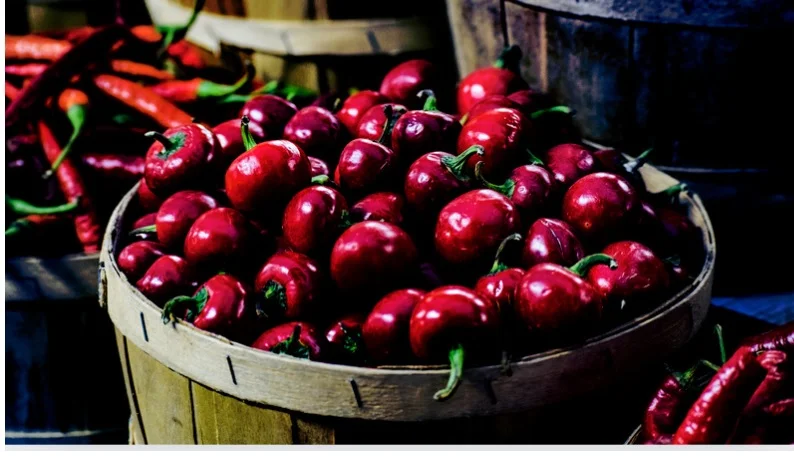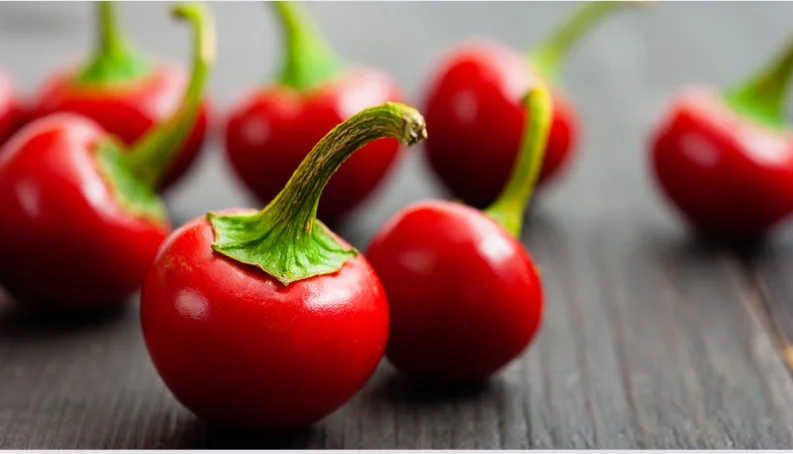Cherry peppers, known for their small, round shape and vibrant red color, are a delightful addition to various culinary dishes. These peppers are mild to moderately hot, offering a unique balance of sweetness and spice that makes them a favorite among pepper enthusiasts. In this article, we will delve into the characteristics, varieties, culinary uses, and benefits of cherry peppers.
Characteristics of Cherry Peppers
Cherry peppers belong to the Capsicum annuum species, the same species that includes bell peppers, jalapenos, and cayenne peppers. Despite their name, which might suggest a sweet profile, pimento possess a spicy kick that can vary significantly between different types. The Scoville scale, a measure of the heat of chili peppers, places cherry peppers between 2,500 and 5,000 Scoville Heat Units (SHU). This range makes them milder than jalapenos, which typically range from 2,500 to 8,000 SHU, but still provides a noticeable heat.
One of the distinguishing features of pimento is their firm, thick skin. This characteristic makes them ideal for pickling, as they retain their crisp texture even after being preserved in vinegar. The peppers’ bright red color and round shape make them visually appealing, often adding a pop of color to dishes and antipasto platters.
Varieties of Cherry Peppers
There are several varieties of cherry peppers, each with its own unique flavor profile and heat level. Understanding these varieties can help you choose the right type of cherry pepper for your culinary needs.
Besler’s Cherry
Besler’s Cherry is an heirloom variety known for its mild heat and slightly sweet flavor. This variety is perfect for those who enjoy a hint of spice without overwhelming heat. Besler’s Cherry peppers are often used in salads, sandwiches, and as part of antipasto platters.
Cherry Pick
Another heirloom variety, Cherry Pick peppers, are similar to Besler’s Cherry in their mild heat and sweetness. These peppers are versatile and can be used in a variety of dishes, both fresh and pickled. Their vibrant red color and mild flavor make them a popular choice for adding visual and taste appeal to meals.
Cherry Bomb
For those who prefer a spicier kick, the Cherry Bomb variety is the way to go. As the name suggests, Cherry Bomb peppers pack a more substantial heat, making them the spiciest of the cherry pepper varieties. These peppers are often used in dishes that benefit from a more pronounced heat, such as spicy salsas or stuffed pepper recipes.
Culinary Uses of Cherry Peppers
These are incredibly versatile in the kitchen, offering a range of uses from pickling to stuffing. Here are some of the most common ways to incorporate cherry peppers into your culinary repertoire:
Pickled Condiment
Perhaps the most popular way to use cherry peppers is as a pickled condiment. Pickled cherry peppers can be found on salad bars, in jars on grocery store shelves, and as part of antipasto platters. Their firm texture and tangy, spicy flavor make them an excellent addition to sandwiches, cheese boards, and salads. The pickling process enhances their natural sweetness while preserving their crisp bite.
Fresh Use
These can also be used fresh in various dishes. When diced, they add a burst of color and mild heat to omelets, burgers, meatloaf, and meatballs. The thick skin, while not ideal for eating whole when unpickled, provides a satisfying texture when chopped and mixed into other ingredients. Fresh cherry peppers can also be sliced and added to salads or used as a topping for pizzas and tacos.
Stuffed Peppers
Another popular use is stuffing them with a variety of fillings. Their small, round shape makes them perfect for stuffing with cheeses, meats, or grains. Stuffed cherry peppers can be baked or grilled, resulting in a flavorful appetizer or side dish. The combination of the pepper’s heat and the savory filling creates a delicious contrast that is sure to please any palate.

Health Benefits of Cherry Peppers
In addition to their culinary versatility, these offer several health benefits. Like other chili peppers, they are rich in vitamins and antioxidants that contribute to overall health.
Nutrient-Rich
These are an excellent source of vitamins A and C, both of which play crucial roles in maintaining a healthy immune system. Vitamin A supports vision health, while vitamin C acts as an antioxidant, protecting the body from free radical damage.
Metabolism Boost
The capsaicin in cherry peppers, responsible for their heat, has been shown to boost metabolism and aid in weight management. Capsaicin increases the body’s heat production, leading to a temporary boost in metabolic rate. This can help with calorie burning and weight loss efforts when combined with a healthy diet and exercise.
Anti-Inflammatory Properties
Capsaicin also possesses anti-inflammatory properties, which can help reduce inflammation in the body. Chronic inflammation is linked to various health conditions, including heart disease and arthritis. Incorporating cherry peppers into your diet may help mitigate inflammation and promote overall health.
Growing Cherry Peppers
If you’re interested in growing your own cherry peppers, they can be cultivated in a home garden with relative ease. Here are some tips for growing cherry peppers:
Planting
Cherry peppers thrive in warm climates and require plenty of sunlight. Plant them in well-drained soil and space the plants about 18 to 24 inches apart. Cherry pepper plants can be started from seeds indoors and then transplanted outdoors once the danger of frost has passed.
Care
Regular watering is essential for healthy growth, but be careful not to overwater, as cherry peppers do not like soggy soil. Mulching around the plants can help retain moisture and keep the soil temperature consistent. Fertilize the plants with a balanced fertilizer to encourage healthy growth and fruit production.
Harvesting
Cherry peppers are ready to harvest when they reach their full red color and are firm to the touch. Use scissors or pruning shears to cut the peppers from the plant, leaving a small stem attached. Harvesting regularly will encourage the plant to produce more fruit.
Conclusion
Cherry peppers are a delightful addition to any kitchen, offering a unique combination of sweetness and spice that enhances a variety of dishes. Whether used pickled, fresh, or stuffed, these peppers provide both flavor and nutritional benefits. With several varieties to choose from, including the mild Besler’s Cherry and the spicy Cherry Bomb, there’s a cherry pepper to suit every taste. Growing cherry peppers at home can also be a rewarding experience, adding a fresh and colorful element to your garden and culinary creations.









